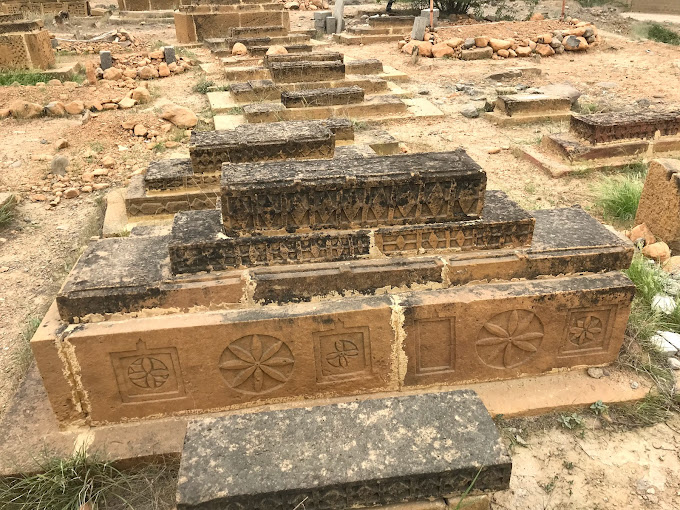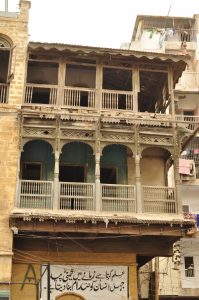bhawani serai graveyard
The SEAS team visited the Bhawani Serai Graveyard in May 2021 as part of their initiative for the preservation and maintenance of archaeological sites in Balochistan. The primary objective of the visit was to assess the condition of the site and gather the necessary data for informed conservation efforts.
During the visit, the team conducted several technical surveys including a drone survey, orthomosaic imaging, Digital Surface Model (DSM), contour planning, and feature drawings. The drone survey provided a highly accurate and detailed map of the graveyard, aiding in effective planning for preservation. The orthomosaic image—corrected for geometric distortions—offers a reliable visual tool to assess damage and monitor the site’s condition over time.
The DSM created a three-dimensional model of the site’s topography, helping identify erosion-prone areas, while the contours plan detailed elevation levels to support future infrastructure planning like drainage systems. Feature drawings documented tombs and structures in detail, serving as essential references for restoration work. The team also developed preservation proposals outlining specific steps to protect the site from further deterioration, ensuring its historical and cultural significance is safeguarded for future generations.




ashiq lallan house.
This beautiful architectural edifice according to its owners dates back to approximately 200 years. It lies on Ali Akbar lane, which is perpendicular to Rampart Road, adjacent to a mosque. As the name suggests, this purely residential building is owned by Ashiqali S Lalan, and was inhabited by his children.
This G+2 building immediately holds the observer’s eye from its main access at the street end. It is a beautiful blend of yellow stone with wooden Jefferies on the main façade. Ali Akbar lane, being a residential lane, is extremely narrow and widens towards its extreme end.

Cultural Heritage of Lalan House
There is obvious religious dominance in the area with two mazaars and a mosque in the immediate vicinity of the building. One of the mazaars is directly adjacent to it.Lalan house is situated near where Muhammad Ali Jinnah was born. Where all the elders of the family and the lalan family lived nearby with close ties to one another and with extensive interaction, this can be seen when Muhammad Ali Jinnah was leaving for England his family borrowed money from the Lalan’s. The historical importance can further be seen by, when he came to Karachi he was entertained in lalan house multiple times.



There is obvious religious dominance in the area with two mazaars and a mosque in the immediate vicinity of the building. One of the mazaars is directly adjacent to it.Lalan house is situated near where Muhammad Ali Jinnah was born. Where all the elders of the family and the lalan family lived nearby with close ties to one another and with extensive interaction, this can be seen when Muhammad Ali Jinnah was leaving for England his family borrowed money from the Lalan’s. The historical importance can further be seen by, when he came to Karachi he was entertained in lalan house multiple times.
So this makes lalan house a part of Pakistan’s national history. Lalan house neighborhood and this particular family were active practitioners of Shia rights. Now after this house is going to be saved will have the ground floor become the small-scale museum to show window to asna ashri twelwers. The architectural layout is reflective of historic houses of Thatta of late mid evil period. It is known to be the last of its kind. The material used is totally indigenous and traditional wood frame and mud has been used.

